From Field to Mill: Raw Product
After Harvest
Gone the sun-stained yellow
Stalks of grain; the sallow
Close-shorn fields lie fallow.
Stalks and stubble broken
Are a rain-bleached token
That the loam is mellow;
That the land has spoken
Trodden straw lies shattered;
Chaff is thinly scattered;
Rain-bleached stubble broken.
Grain was all that mattered.
– Maud E. Uschold
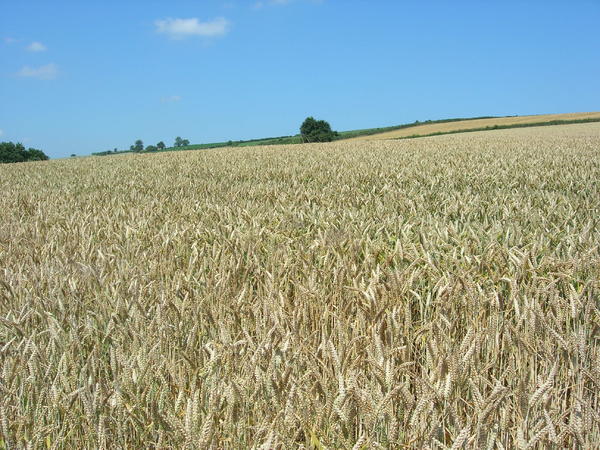
‘Grain was all that mattered’. That was true when Maud E. Uschold wrote this poem at the beginning of the 20th century and it is true today. To a miller, the first and possibly most important stage of the milling process was receiving that raw product, the grain that they will mill to turn into flour. This importance of grain to the milling process did not change with the move to roller milling machinery. In fact it actually became more important, as it was the properties of wheat that caused the change to roller milling to take place.
In Britain references to grain or corn can include wheat, barley, oats, maize, rye, rice, and buckwheat, to mention a few. All of these grains can be ground as a part of the milling process as the basic definition of flour is ‘a finely ground powder prepared from grain or other starchy plant foods’ (Harris, p.6). However, it is predominantly wheat that is used and that will be the focus of this piece.
History
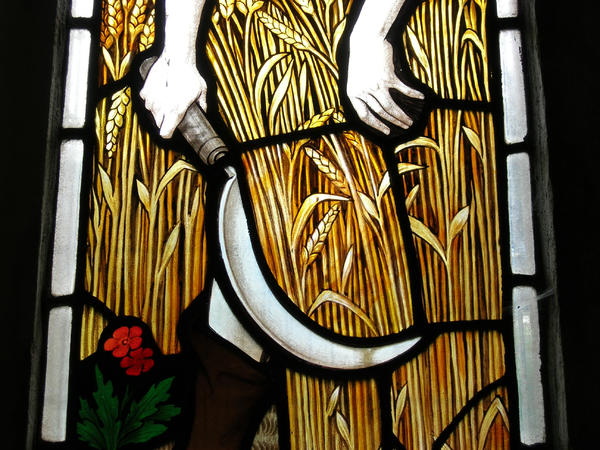
Wheat has a long and somewhat obscure history. Whilst there is evidence of ancient civilisations having used it, it is unclear exactly how old the grain is or where it originated from. Indeed, Edgar writing in 1903 stated that the ‘Origins of wheat finds no exact date in history’ and that the ‘problem of the original home of wheat is obscure and probably unsolvable’ (Edgar, pp. 29&34). Given that he was writing over a hundred years ago there have been some advancements but it is still not definite where and when it was first used. It is believed that its home was somewhere in or near Mesopotamia and Egypt and that it could have been grown as early as the 10th century BC. The early grains were then crossed with each other to form hybrids such as spelt (seen in the photo below), until we eventually ended up with the modern wheat of today, Triticum aestivum.
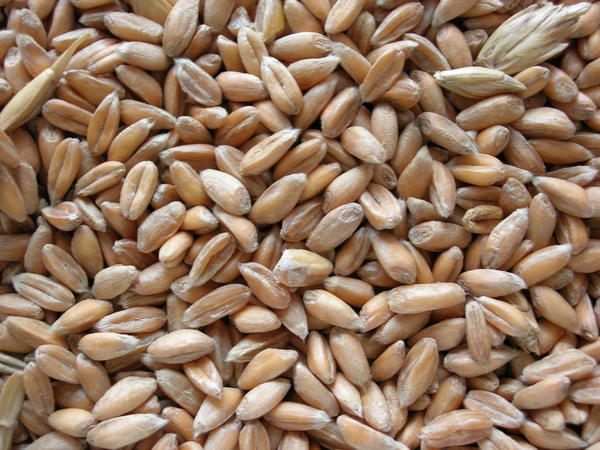
Wheats grown within the same region could easily be crossed to form hybrids, but this does not explain how wheat became a crop grown throughout the world. The earliest use of wheat in Europe is also unknown. The earliest European wheat sample was found with the body of Ötzi the Iceman, who, at 5,300 years old, is Europe’s oldest mummy. In his clothes was found a grain of ‘einkorn’, the oldest cultivated wheat in the world. This provided evidence for wheat in Europe whilst other areas of the world may have had Europeans to thank for the further spread of wheat. Explorers and settlers bought grain with them when they travelled to new lands such as Australia, New Zealand, America, and the West Indies. Whilst the wheat that was bought may have been the same as that in Europe, the unique conditions of these places meant that many new variations and hybrids developed leading to the great variety of wheat that is available on the market today.
Varieties
Whilst all wheat is common in the fact that it belongs to the grass family, Gramineae, it is not all the same and numerous different varieties can be found throughout the world. The main differences used to classify wheat were summed up by Voller: ‘Wheat is usually divided into the two main classes of autumn (or winter) and spring (or summer) wheat. These again are subdivided into numerous types and varieties. Wheat is grown under three shades of colour: white, yellow, and red.’ (Voller, p.6). The autumn/winter and spring/summer wheat is in reference to the season during which the crop is grown.
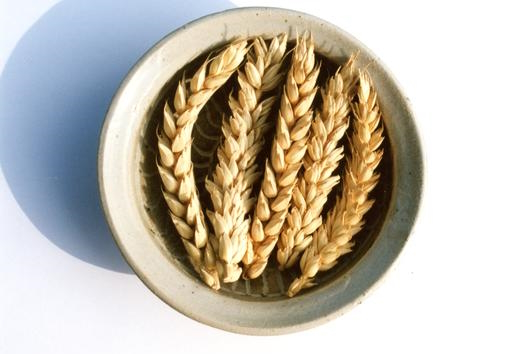
When describing the properties of the different coloured wheats, Voller states a third difference between wheat, its strength. He wrote that ‘The strongest wheats are red (though it is not correct to infer therefore that all the red varieties are strong)’ (Voller, p.65). In contrast, ‘The strongest whites are never equal in strength to the best reds’ (Voller, p.66). This strength is referring to level of the gluten caused by the amount of protein present. Soft wheat contains 8-11% protein whilst hard wheat contains 11-18%.
So, despite sharing the common name of wheat, there are actually many varieties around the world and all of these are affected by different elements. Again Voller, sums these elements up: ‘pedigree, soil, and climate’ (Voller, p.11). This helps explain the geographical differences of wheat as the weather and nutrients of the soil could affect the final product, producing as many varieties of wheat as there are varieties of climate.
Uses of Wheat
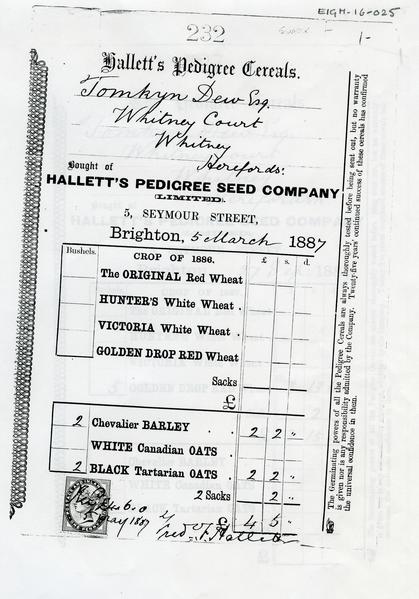
The different varieties and properties of wheat are useful when it comes to the uses of flour. As previously stated, hard wheat has a higher percentage of protein present. This makes it better for making bread as the dough has more gluten allowing it to rise. Cakes and pastries, on the other hand, work better with a mixture of soft and hard wheats. The especially strong Durum wheat is used for making pasta whilst old grains, such as spelt and einkorn already referred, are becoming popular again today for those with dietary requirements and artisan bakers.
The different properties of wheat are also useful in understanding the advent of roller milling. During the 19th century there was a greater desire for white bread, bread which would have to be made out of strong flour made from hard wheat. However, ‘Hard wheat often did not grind satisfactorily between millstones, which tended to break the bran into small pieces, making it difficult to sieve out a good proportion of fine white flour’ (Harris, p.8). Therefore, if white bread was going to be made out of hard wheat, with its natural properties for bread baking, a new method would have to be found to grind the wheat. This is where the roller system came in as it resulted in a fine white flour leading to a white loaf. This meant that flour produced by roller machinery was in greater demand, and in turn, millers were creating a high demand for hard wheat so they could make the flour.
For millers in Britain, this presented a problem. The wheat in England, whilst prized for its ‘good colour and sweetness’, was never strong (Voller, p.49). Indeed, out of the eighteen different varieties grown in England that Voller described, only two could be described as ‘Dry to hard’, the other sixteen were ‘Mild, soft’ (Voller, pp.50-53). Instead, the best hard wheats were grown abroad so had to be imported. The main places it could imported from were North America and Russia. Voller was complimentary about both of their exports: ‘American Red Winter stands very high in reputation for all-round qualities; though weaker than Spring, it often yields better, always grinds well, and adds a very agreeable sweetness to the loaf’ whilst ‘Russia sends an immense supply of strong red wheat known broadly as Azima or Ghirka’ (Voller, pp.58 & 63). The choice of where this wheat was imported from could affect and be affected by the location of the mill that was its destination (as can be read about here).
So, wheat is not just wheat. There are numerous varieties and hybrids all of which create flour with different properties. A baker has to trust that the flour they buy will be the right sort as the miller will have ground the correct wheat to make that type of flour. It was these different properties of wheat that sparked the greatest change in milling ever seen in the 19th century. Whilst it was the desire for white bread and therefore white flour, that sparked this change, for the miller, grain was still grain and it was ‘all that mattered’.
Read more about the history of Wheat and Ötzi the Iceman in this blog post.
Sources:
Barker, A., The British Corn Trade (London, 1919).
Edgar, William C., The Story of a Grain of Wheat (New York, 1903).
Harris, Nigel, Wheat Flour Milling from Millstones to Rollers (2017).
Peterson, R. F., Wheat (New York, 1965).
Uschol, Maud E., ‘After Harvest’, The Northwestern Miller (25 November, 1942), p.20.
